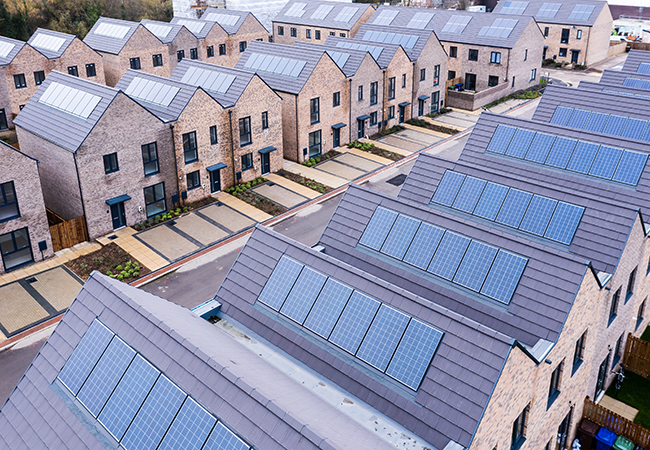
The ‘vast majority’ of new homes will have solar panels installed in the future, the government has announced as part of a wide-ranging shake-up of Building Regulations.
Changes, set to be outlined in the long-awaited Future Homes Standard (FHS), introduce new energy efficiency and low carbon heating benchmarks for residential development.
The proposed FHS, which is due to be published this autumn, will amend Building Regulations to ‘explicitly promote solar for the first time’, the government has said, subject to ‘practical limits’ and with flexibility for new homes surrounded or heavily overshaded by trees.
In a 2023 consultation on the draft FHS, the previous Conservative government proposed that new build homes would need solar panel coverage equivalent to 40% of the building’s floor area.
If this was not possible, the consultation said no panels would be required, which, said the government, would have allowed for ‘too many exemptions’. It said developers unable to meet the 40% coverage benchmark will now be required to install a ‘reasonable amount’ of solar panels.
Progress on the FHS, which was first mooted during Theresa May’s Conservative government in 2019, has been held up by housebuilder concerns that it could add up to £4,000 onto the construction costs for a typical new home.
In its announcement, the government countered that concern by saying that homeowners would – by the installation of solar panels – save £530 on their electricity bills per annum based on the existing energy price cap.
The government has also confirmed that low carbon heating, such as heat pumps and heat networks, will be a requirement under the FHS, a move welcomed by Charlotte Lee, CEO of the Heat Pump Association.
However, Richard Beresford, chief executive of the National Federation of Builders, said the main barriers to mandating solar panels on all new buildings are grid costs and delays.
He said: “Although not yet fully resolved, the government has made real progress to fixing those issues, particularly through changes to the connection process, and planning reforms that ensure grid infrastructure funding goes further and faster.



